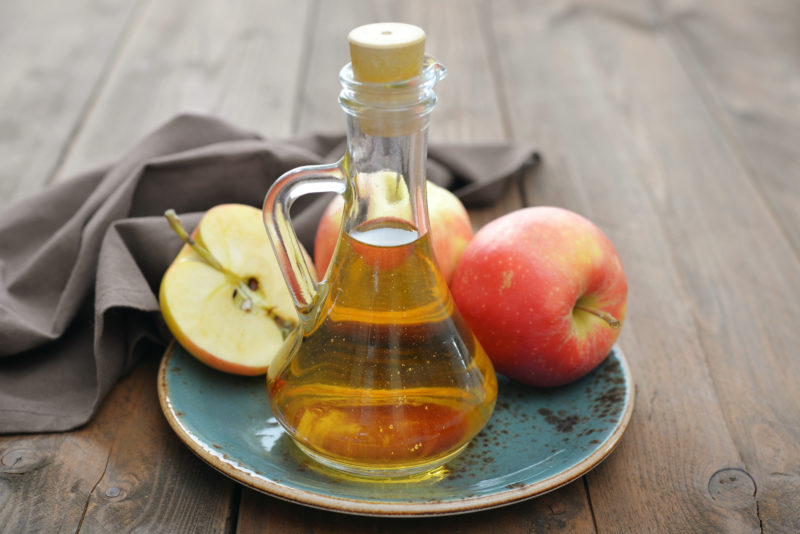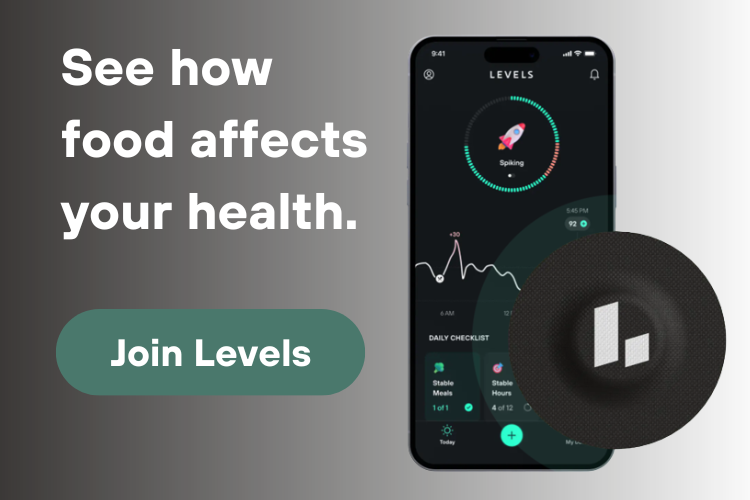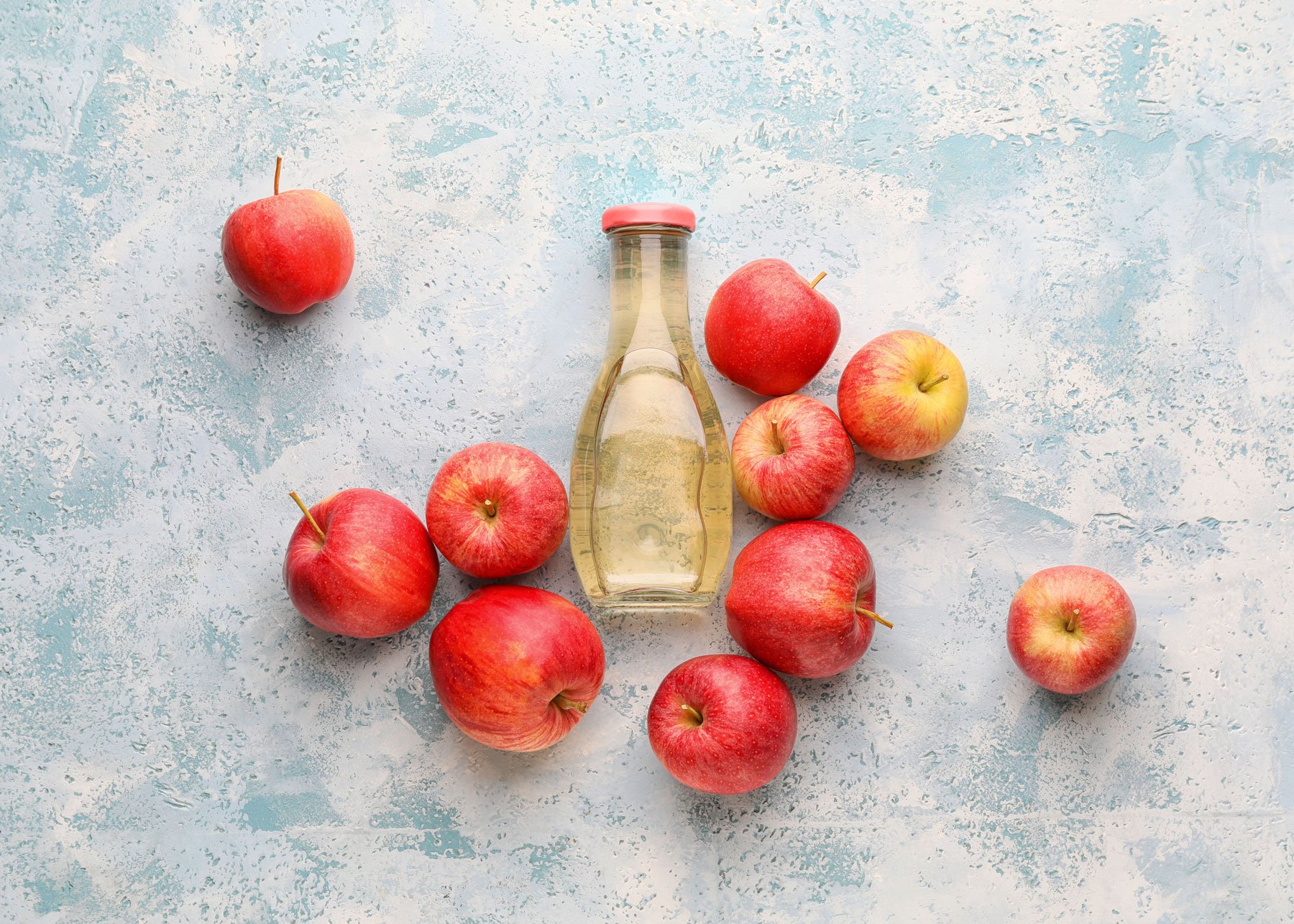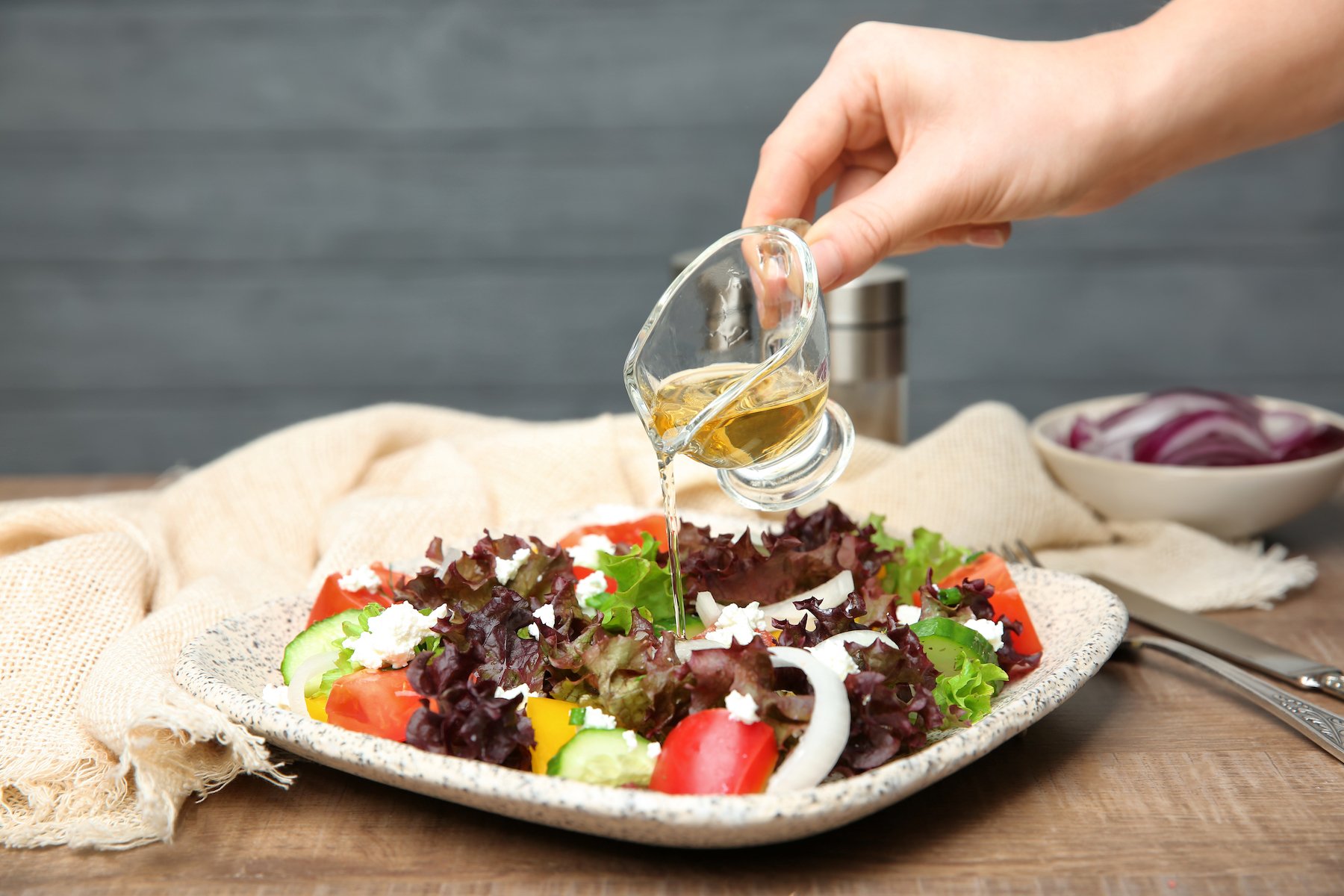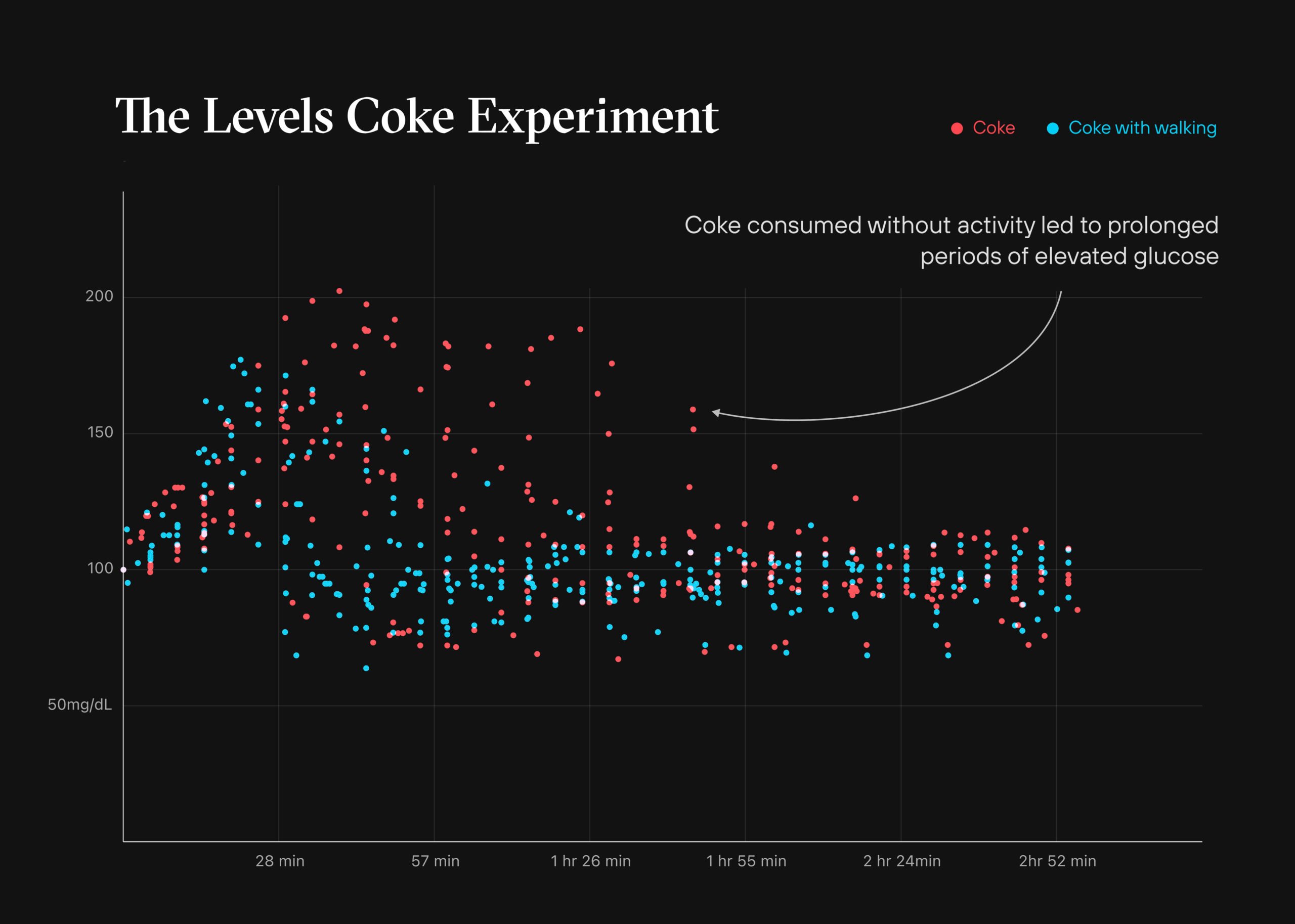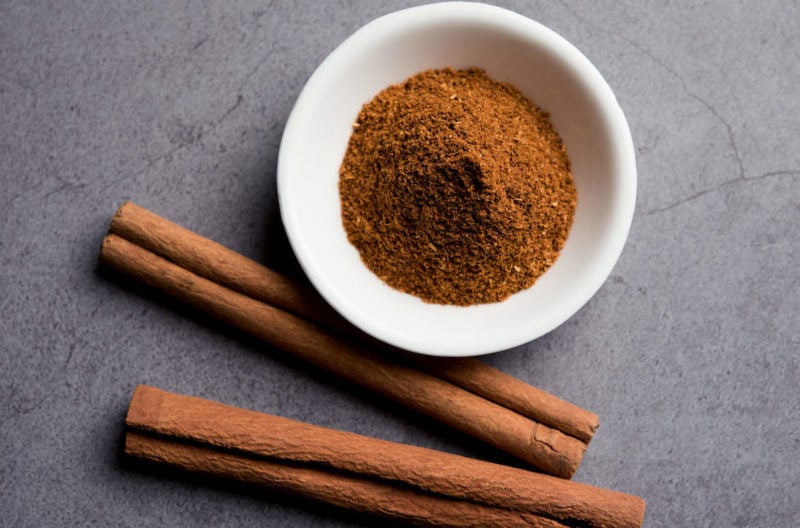A recent experiment conducted by Levels’ research team finds that drinking apple cider vinegar (ACV) may help blunt blood sugar surges after meals—but not for everyone. Like much of the existing research on ACV and glucose, the results are mixed.
ACV’s reputation as a healing food dates back thousands of years, and recent research links the ingredient to reduced cholesterol, improved gut health, and weight loss. In addition to these perks, some studies suggest that ACV can help reduce post-meal increases in blood sugar. Proponents of this view maintain that the vinegar, made from fermented apple juice, slows the rate at which food leaves the stomach, increases cells’ ability to uptake glucose, improves the function of pancreatic beta cells (i.e., the insulin makers), and more. However, there isn’t a huge amount of research on these effects, with results varying widely across existing studies.
Hoping to shed additional light on this topic, we conducted our own investigation into ACV’s effect. This study is the latest in a series of Community Experiments—opt-in challenges that ask Levels members to test how different foods or activities impact their blood sugar by leveraging the real-time 24/7 data gathered by their continuous glucose monitor (CGM) .
An important note: Participation in Community Experiments, and the collection of associated data, is completely voluntary. Levels does not use member information for experiments unless the member explicitly agrees to participate.
The experiment
We announced our ACV experiment through a community newsletter, inspiring 54 people to complete the challenge. Among them, the average age was 35, and 60 percent were male.
Designed to fit conveniently into participants’ lives, the experiment took two days to complete. On day one (the control day), members ate a typical meal they enjoy. On day two (the experiment day), they ate an identical meal and, during it, drank four tablespoons of ACV mixed with eight ounces of water. Participants wore CGMs throughout the experiment and, using the Levels app, could compare changes in their blood sugar across the two conditions.
In addition to food, there are many factors that can influence your blood sugar, including stress, sleep, medications, and physical activity. Attempting to control for these factors, we advised participants to maintain their normal routines and refrain from carrying out the experiment on high-stress days. We also encouraged members to eat the meal in the same 30-minute window on both days and avoid eating or drinking within two hours of the meal.
The results
Fifty-seven percent of participants saw reduced glucose responses when they drank ACV with their meal; 17 percent experienced no difference across the two conditions; and 26 percent observed a larger blood sugar spike when they drank the ACV.
On their face, those numbers don’t indicate much of an effect. However, after further analyzing the data, we discovered an interesting trend. Namely: ACV’s effect seemed to depend on a participant’s “time-in-range,” a term referring to the amount of time a person’s glucose level stays in the recommended target range of 70 to 110 mg/dL. A higher time in range tends to correspond to more stable, healthy blood sugar levels.
Participants with a high time-in-range didn’t benefit much from adding ACV to their meals. By contrast, among participants who spent less than 70 percent of their day in range, drinking ACV reduced glucose spikes by an average of 16 mg/dL. In other words, participants who had more room for improvement were more likely to see a positive effect.
“Although ACV is commonly touted as an acutely blood-sugar-lowering food for people with diabetes, these results hint that the impact may not be as consistent for the general population,” says Levels’ Research Design Lead, Azure Grant, PhD.
Learn more:
Takeaways
In this experiment, participants with low time-in-range seemed to benefit from drinking ACV with their meals. Those with more stable glucose, however, did not typically see an improvement in their levels. These findings, though suggestive and statistically significant, may not necessarily apply to the population at large. While the group studied was large relative to most experiments on ACV and blood sugar, it was still too small to form definitive conclusions. It’s also important to note this experiment was not a clinical trial, and the results have not been peer-reviewed.
We believe that studies like these are most valuable to the people participating in them. By experimenting with meals and generally being more attentive to what they’re eating, participants can cultivate a better understanding of how food directly impacts their health and well-being. In this case, members were able to explore how ACV affects their individual glucose dynamics, which can help them make everyday decisions that improve metabolic health.
“Experiments like this highlight the benefit of verifying the impact of any food in your own body,” says Grant. “If you’re interested in whether vinegar will positively impact your blood glucose, the best way to find out is to try it yourself, multiple times if possible.”
